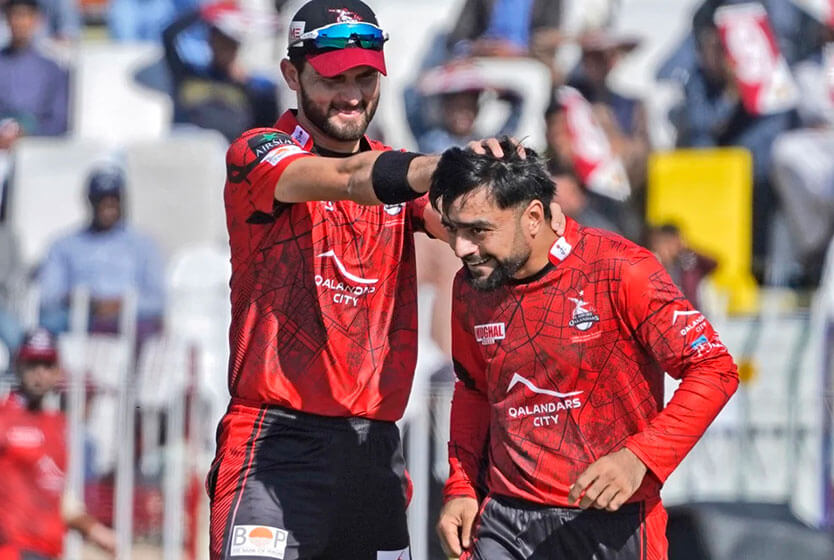
How Did Pakistan Win the 2009 T20 World Cup?
A retroactive analysis of Pakistan’s World T20 win through modern numbers ft. some interesting tactical decisions.
2009 was a turbulent year for Pakistan cricket, with off-field controversies and incidents often overshadowing and, at times, influencing on-field performances. Nevertheless, it was also the year Pakistan claimed only its second-ever world title – a win that would spark wild celebrations and give birth to another generation of cricket-mad tykes.
Pakistan began their tournament with a humbling 48-run loss to England, who were smarting from a close-run loss to the Netherlands in the first game of the tournament. Pakistan now found themselves in a position of not only having to win vs. the Netherlands at all costs but also having to make up the net run-rate deficit because of the big loss vs. England. Memories of the 2007 World Cup were on everyone’s minds, and an ignominious exit seemed on the cards.
But Pakistan, for the first time, showed glimpses of the determination they would play the rest of the tournament with as they walloped the Netherlands by 82 runs and secured their place in the Super Eights.
In the Super Eights, they would once again hit a roadblock in the form of future finalists, Sri Lanka, as they were soundly beaten. This, however, would be followed by the momentum shifting win vs. New Zealand, which would begin their four-match win streak that ended with their hands on the trophy at Lord’s.
Pakistan weren’t supposed to get past the semi-finals. They had just about made it there thanks to a few happy coincidences. They benefitted from a tournament draw that placed India, Bangladesh, and Ireland in one of the initial groups while Sri Lanka, West Indies, and Australia were in another. This resulted in Ireland qualifying for Pakistan’s Super Eight group while Australia were eliminated. We can only imagine what could’ve happened if Bangladesh and Australia’s places were switched.
One can only speculate whether these would’ve been the groups drawn up if the ICC had not had the bad experience of India being eliminated in the initial phase of the 2007 World Cup, cutting their audience and hence revenue down by more than half.
Pakistan would come second in both groups that they were placed in for the World T20. Looking at it retroactively, the New Zealand game was essentially a quarter-final, and the right Pakistan showed up that day. So even before the knockout stages had begun, Pakistan had already participated in two or three games that were sudden death.
They would go up against South Africa in the semi-final, who topped every group they were a part of, but as Nasser Hussain would famously remark, the Pakistan that showed up that day “was the one to be afraid of.”
Spin To Win
The 2009 WT20 was a haven for spinners. Five featured in the top 10 wicket-takers for the tournament. They ruled the middle overs, conceding runs at 6.62 while averaging around 20. The top three spin bowling teams all featured in the semi-finals of the tournament, with the top two qualifying for the final and the best winning the whole damn thing.
Pakistan were blessed with the wiles of Ajmal and Afridi, Sri Lanka had the mystery of Mendis and Murali, while the South African pair of van der Merwe and Botha put up an impressive show. But while spinners did enjoy their time, Afridi and Mendis were on a different level in the middle overs. Mendis averaged under 10 while Afridi conceded his runs at under 5 runs to the over, taking a wicket every 12 runs.
A Different Approach
With spinners being so dominant, teams looked to attack in the Powerplay, consolidate in the middle, and tee off at the death. However, Pakistan did not have a settled opening combo. During the tournament, they tried Butt-Shehzad and Akmal-Butt before finally settling on Shahzaib-Akmal. Due to there being instability at the top, Pakistan often underperformed in the Powerplay. Thus, they put out numbers well below the tournament average.
They would similarly struggle to hit out at the death with a death run rate of 8.19 well below the tournament average of 9.24. Hence, they weren’t getting anywhere using the conventional approach, so they decided to be unconventional. Realizing that they possessed quite a few excellent players of spin, they looked to attack more in the middle overs.
Kamran Akmal was the second-fastest scorer in the middle overs (min. 50 runs); he struck at over 150 while averaging over 30. Similarly, Younis Khan also struck over 130 – with a spin strike rate of 150 and an average of 68. But both Younis and Akmal were more comfortable taking down the spinners when set. There was one man who was sent with the express intent to disrupt the spinners.
Shahid Afridi would average 61 in the middle overs of the 2009 WT20 while striking at 139. While batting at 3, he struck at 162 vs. spin at an average of 30. All this in a time when the strike rate for the middle over was 110!
Afridi may have been the King of Lahore, Peshawar, Karachi, and Nottingham, but he was also the King of the Middle Overs in the 2009 WT20. Scoring runs at a run rate of over 8 but conceding them at a rate less than 5, averaging 60 with the bat but 12 with the ball – he was essentially two table-topping players in one.
Score at the Death, if You Dare
Pakistan seemingly decided that if they can’t make runs at the death, then no one else can either. They would finish the tournament as the second-best death bowling side of the competition. This was due to two major factors.
One was their excellent utilization of T20’s most valuable fast bowler at the time – Umar Gul. Gul would bowl only three overs in the Powerplay, conceding runs at 10 RPO. The management would soon realize what Gul’s numbers reflect at the end of his career – that his true value lies at the end of the innings. He actually put up a very decent show as a middle overs enforcer, taking four wickets while conceding runs at less than a run-a-ball, but the thing that he will be remembered for is his miserly death bowling.
However, Pakistan initially found themselves in a dilemma on who to partner Gul with at the death. They had two other pacers – Amir and Razzaq. Razzaq had lost quite a bit of pace and was no longer dependable at the death, while Amir at the time was a 17-year-old rookie. It is here where Saeed Ajmal stepped in.
Ajmal and Gul would bowl over 70% of Pakistan’s death overs, conceding runs at a scarcely believable economy of 6.37. Other Pakistan bowlers to bowl at the death during the tournament went at an economy of 9.69.
The Final
Sri Lanka had been the best team in the competition; they had won every single game they had played in the tournament and topped every group they were a part of. The pillars on which they built their success were Powerplay Batting and Spin Bowling.
At the forefront of the Powerplay Batting was Tillakaratne Dilshan – the highest run-scorer of the tournament. Dilshan had only been dismissed once in the Powerplay in the entire tournament, averaging 146 while striking at 162. He was largely responsible for Sri Lanka being one of the finest powerplay batting teams in the tournament.
Pakistan’s death bowling and middle overs bowling were world-class, but they were distinctly below average in Powerplay bowling. Before the final, they took their PP wickets at 34.9 runs apiece (below average) and conceded 7.76 RPO (average). Looking at the numbers, one would expect that score at the end of the PP in the final to be about 40-45/1 with Dilshan still standing.
In actuality, the score was 34/4, with Dilshan extracted in the first over, thanks to a wonderful plan. Abdul Razzaq then stepped in and delivered a spell for the ages, scything through the Sri Lankan batting line up like a hot knife through butter.
The middle overs operators would step in and do their job, but the death bowlers would have an off day as Sri Lanka took 58 off the last 5. The momentum may have perhaps shifted slightly towards them. There was a final frontier to conquer.
Ajantha Mendis was at the peak of his powers. Afridi may have been tasked with ensuring he didn’t settle, but the openers made sure he wasn’t needed. After a sedate start – 30/0 in 5 overs, Captain Kumar Sangakarra turned to his trump card. Kamran Akmal seized the initiative and slog-swept Mendis’ third ball for a six, nine was taken off his first, and Mendis was removed from the attack. Kamran would walk past a Jayasuriya ball, and Mendis would be brought back into the attack. This time, Shahzaib Hasan, who until then was on 10 off 18, decided Mendis could not be allowed to settle and struck two boundaries while taking 12 off the over. Sri Lanka’s trump card had gone for 21 off his first two overs, and once again, he was pulled from the attack.
Afridi handled Murali and attacked Udana when the time came to finish the game. He held his hands aloft in the famous star man pose. Pakistan had conquered the T20 world after heartbreak two years ago.







Leave a Reply